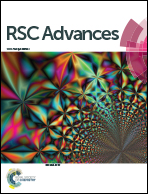Pd-catalyzed direct oxidative mono-aroyloxylation of O-aralkyl substituted acetoxime ethers†
Abstract
A highly site-selective palladium-catalyzed ortho-mono-aroyloxylation of O-aralkyl substituted acetoxime ethers via direct Csp2–H bond activation has been developed with simple exo-acetoxime as a directing group. The broad scope of masked aralkylalcohols and various aromatic acid partners are compatible with this transformation, which should undergo a mechanistic pathway of six, seven, or even eight-membered exo-cyclopalladated intermediates. In addition, the acetoxime directing group can be readily removed through N–O bond selective cleavage at a late stage, providing a potential utility for the preparation of valuable functionalized aromatic alcohols.


 Please wait while we load your content...
Please wait while we load your content...